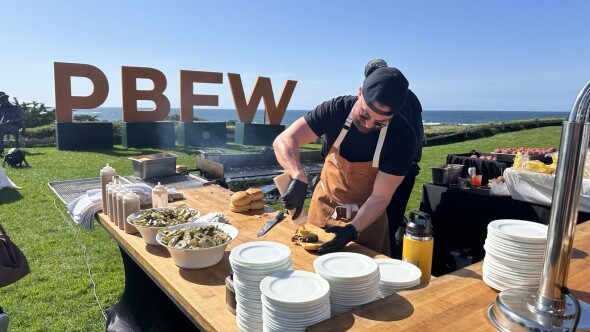BLUFFTON, S.C. -- The Lowcountry might as well be called the "low key country," too.
Simply defined, the Lowcountry stretches along the southern coast of South Carolina and its sea islands. There's a cultural ethos associated with this beautiful place that says life should be taken a little slower, so as to stop and enjoy the natural surroundings. The marshes, streams, ponds and inlets that connect to the Atlantic Ocean are teeming with wildlife, especially birds and alligators.
The golf courses and residential and commercial developments tend to be more thoughtful and less intrusive. It's a big reason why the region is so packed with transplants, tourists and golfers.
Bo Madeo recently moved to Hilton Head Island from New York to chase life on the mini-tours.
"I love it down here," he said, in between hitting balls on the range at the Golf Club at Hilton Head Lakes. "It's a great place. Florida, it just feels like it's just golf course after course stuck in the middle of concrete. This has a more natural feel to it."
The Lowcountry vs. the Grand Strand
That natural feel is probably the major difference between the Lowcountry and the Grand Strand to the north, a golf mecca that stretches north from Pawleys Island roughly 90 miles.
Myrtle Beach boasts more golf courses than the Lowcountry, but it's a tough argument as to which destination is better. For the record, Golf Digest recently ranked two Lowcountry destinations -- Charleston/Kiawah Island (No. 6) and Hilton Head Island/Savannah, Ga. (No. 9) -- among the top 10 "buddies-trips" in its January edition, while North Myrtle Beach (No. 25) and the southern edge of Myrtle Beach (tied for No. 26) sat further down the list.
The deciding factor for most is simple: If you want a relaxing vacation, come to the Lowcountry. If you want a hair-razing adventure filled with gentlemen's club, bars and families with small children invading the beach, then go to the honkey-tonk sections of Myrtle Beach.
Much of Bluffton's development is built hidden from Fording Island Road (also known as Highway 278), so much so, it takes a trip or two to figure out how to find the best restaurants and hang-out spots.
The top public golf courses in the Lowcountry -- Harbour Town Golf Links on Hilton Head Island and May River Golf Club at the Inn at Palmetto Bluff in Bluffton (along with Kiawah Island Golf Resort near Charleston) -- can certainly hang with the best of Myrtle Beach.
The Grand Strand may boast a better secondary supporting cast, but Bluffton's lineup of Eagle's Pointe Golf Club, Crescent Pointe Golf Club, Hilton Head National Golf Club and Old South Golf Links is strong, too.
It's also worth mentioning all these courses are so convenient to one another, whereas chasing down Myrtle Beach courses can require some driving.
Explore the beauty of the Lowcountry through golf
Oldfield Golf Club, a private club in Okatie that allows some public play, and Sanctuary Golf Club on Cat Island near Beaufort are probably the two most scenic and serene of the Lowcountry offerings outside of the more expensive resort courses of Hilton Head Island and Kiawah Island. They perfectly illustrate why golfers love playing the Lowcountry.
Sanctuary's 16th green and 17th tee box sit as small islands of exposed land jutting out into water and marshland.
"If there is a better view from 16 to 17, I don't know where it is. Looking out at the water is unbelievable," Sanctuary Head Professional Joe Matheny said. "If you come (to the Lowcountry) for laid-back golf, this is the place."
Oldfield was the first real estate development to earn Audubon International's Neighborhood for Nature Award. Its Greg Norman-designed course, designated as a Certified Audubon Cooperative Sanctuary in 2002, flirts with the Okatie River and wetlands, creating unforgettable risk-reward holes. The 12th hole might be the best short par-4 hole in South Carolina.
"I can't remember a round where I haven't seen an osprey or an eagle dive into the water and pull out a fish," Oldfield Head Professional Jon Hundley said. "There's a baby fox on the back nine that likes to come out. The nature is just unbelievable. Everything we do to the course is environmentally friendly."
It's that nature-first mentality that endears people to the Lowcountry.















